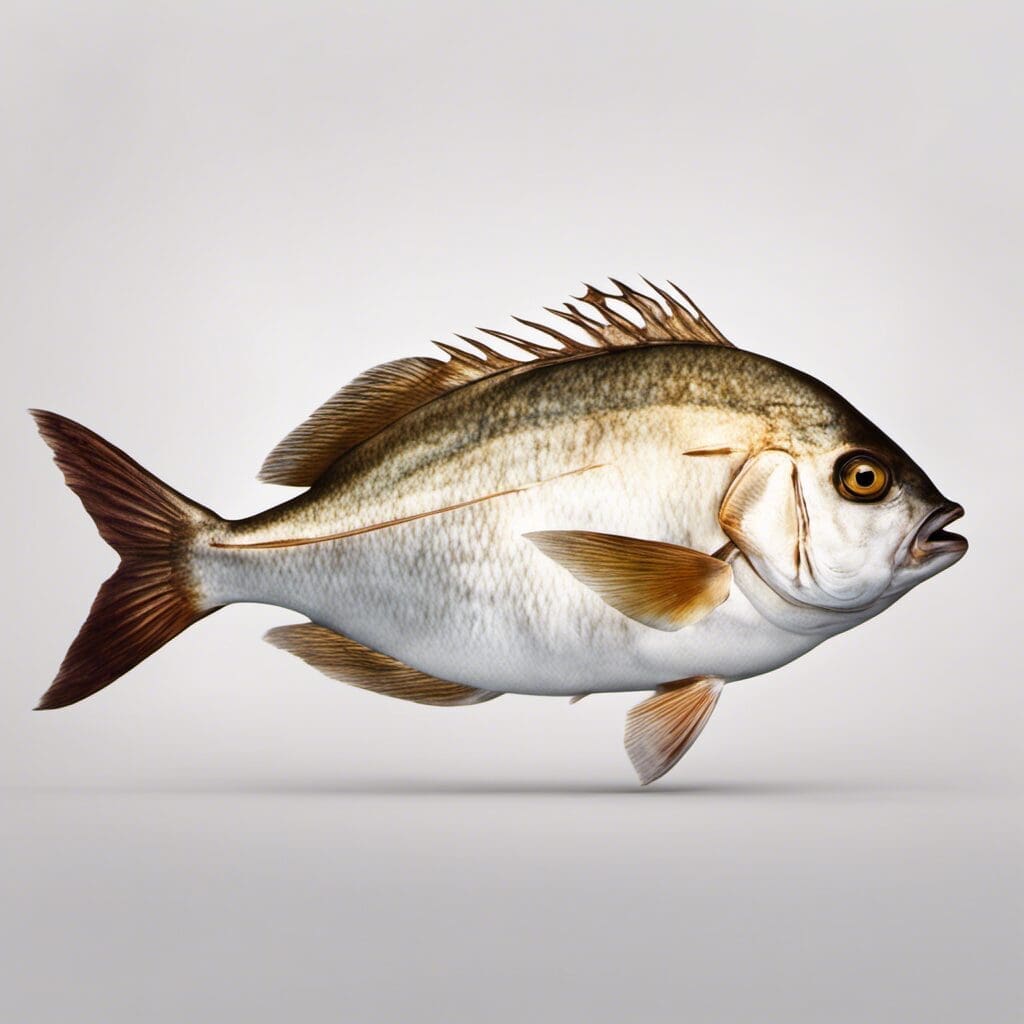Introduction
Gilt-head (Seabream) is a tropical, marine fish species, known scientifically as Sparus aurata. It belongs to the Sparidae family, commonly known as porgies or sea breams.
Conservation Status
The current conservation status of Gilt-head (Seabream) is listed as Least Concern by the IUCN Red List, indicating that this species is not currently in immediate danger. Conservation efforts primarily focus on habitat preservation and maintaining healthy population levels.
Statistics
| Average | Range | |
|---|---|---|
| Length | 35 cm | 15-70 cm |
| Weight | 1.2 kg | 0.1-15 kg |
| Average Lifespan | 11 years | – |
Distribution
Gilt-head seabreams are widely distributed across the Mediterranean Sea and the eastern coastal regions of the North Atlantic Ocean. They do not exhibit typical migration patterns, but young fish may distribute themselves over several miles depending on seasonal changes or food availability.
Habitats
As a marine species, Gilt-head (Seabream) inhabit saltwater environments with a depth range from 0 to 150 m. Their preferred water temperature is between 15-25 degrees Celsius.
When and Where to See
Gilt-head (Seabream) can be spotted year-round, but significant increases in sightings occur from April to June and from October to December, coinciding with spawning periods. They are predominantly active during daylight hours.
Best Fishing Locations
Top fishing locations for Gilt-head (Seabream) include:
- Venitian Lagoon, Italy
- Estuary of the Guadalquivir, Spain
- Alboran Sea, Spain
- Tagus estuary, Portugal
- Aegean Sea, Greece
- Marmara Sea, Turkey
- Azov Sea, Russia
- Black Sea, Romania
- Crete Island, Greece
- Canary Islands, Spain
How to Catch
Popular baits or lures include small fish, shrimp, squid, and crab. Successful fishing techniques can range from fly fishing to bottom fishing. The best time to fish for this species is late afternoon, particularly during their spawning season.
Identification Guide
Physical characteristics of Gilt-head (Seabream) include a silvery body with shades of blue and gold, especially on the head. A distinguishing spot can be seen near the end of the gill cover. This species is chunky, oval in shape in profile, and has a steep forehead.
Culinary
Gilt-head (Seabream) is a popular fish in Mediterranean cuisine due to its firm, white flesh and mild, sweet flavor. The skin is usually left on when cooking and the fish is often grilled, baked, or roasted whole. It has a high protein content and is rich in omega-3 fatty acids.
Additional Information
Gilt-head (Seabream) feeds on a wide range of prey, including invertebrates and other small fish. It has few natural predators, but can be threatened by habitat destruction and pollution. In terms of cultural significance, Gilt-head seabream is often associated with good luck in Mediterranean folklore.
References and Further Reading
A comprehensive guide to Gilt-head (Seabream) can be found in the book “Field Guide to the Fishes of the Atlantic and Mediterranean” by Bruce Sandison. Comprehensive scientific information is also available from the entries of Sparus aurata in FishBase and the International Union for Conservation of Nature (IUCN) database

